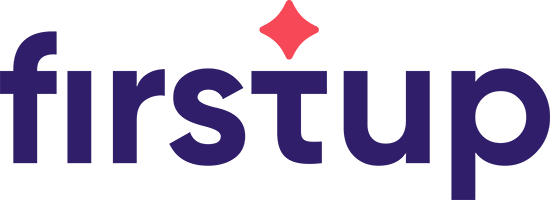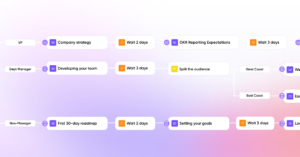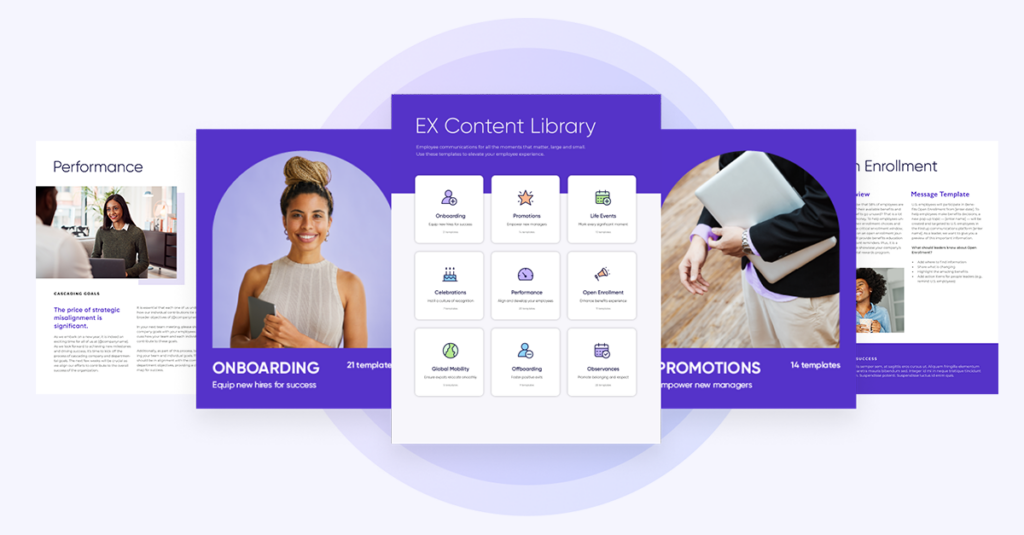What is a distributed team?
A distributed workforce may be the most effective way to build a company. This is when employees are dispersed geographically beyond the traditional office environment and do not necessarily conduct business from the same location… and may be the future of work. Covid-19, especially, has given companies a taste of what having distributed teams is like, and to judge whether or not they have the infrastructure to support fully-remote work.
Working outside of company offices on a regular basis has proved to be a trend with serious staying power. The number of employees who work offsite continues to rise. Consider these statistics:
- Last year, CNBC reported on a study showing that 70% of employees work remotely at least once a week, and 53% work remotely for at least half of the week.
- According to a report in the Harvard Business Review, 52% of survey respondents indicated that they worked from their home offices at least sometimes.
- Walden University conducted a recent study and found that the number of remote workers has increased by 80% over the last decade.
What’s the value of a distributed workforce?
We have a number of names for remote workers today (we might call these teams remote, geographically dispersed, or distributed) but no matter what terms we use, it’s clear employees enjoy the better work balance and flexibility of remote work. In some cases, working as part of a distributed team can even open access to higher quality or higher paying jobs.
From the perspective of employers, allowing employees to work remotely also poses a number of benefits. A study by Walden University shows that remote workers:
- are more productive than their traditional in-office colleagues,
- cheaper to maintain,
- greatly increase the hiring options for organizations, and
- more apt to display better levels of workplace engagement (this is especially true when remote employees feel a personal connection to their work environment and a work culture that they’re familiar with).

In his TED Talk this year, Automattic CEO Matt Mullenweg says working from home is good for business. He employs more than 800 people who live all over the United States and in 67 different countries. Some of them, he says, choose not to have a home base and live nomadically in mobile homes or moving from one Airbnb to the next. He intentionally uses the word “distributed” to describe these employees.
“Our focus on distributed work didn’t happen accidentally,” he says in his presentation. “It was a conscious choice from the very beginning. Notice I don’t use the word ‘remote,’ because it sets up the expectation, that some people are essential and some aren’t. I use the word ‘distributed’ to describe what we do, where everyone is on an equal playing field.”
According to Mullenweg, a dispersed workforce is a more effective way to build a company because it gives workers autonomy and allows companies to dip into a deeper talent pool.
What Unique Challenges Do Distributed Teams Face?
Of course, allowing employees to work remotely doesn’t automatically guarantee immediate payoffs for employees or their companies. As we’ve often noted, employee engagement is a common stumbling block whether workers are distributed or not. Numerous studies have found that over 60% of U.S. employees are disengaged with their work, while more than half of the nation’s disengaged employees work remotely. These levels of disengagement cost businesses about $550 billion annually.
Another key issue with distributed teams is that employees might feel that they don’t receive equal treatments as colleagues who come into the office every day. According to Forbes, “You can run into trouble if half your team is coming into the office every day while others are working remotely. It’s easy for people to begin feeling left out.”
Consider a study featured in Harvard Business Review, which shows 52% of the respondents said that their colleagues don’t treat them the same when they work from their homes. They worry that coworkers might be more inclined to say bad things behind their backs, make changes to projects, lobby against them, or fail to support their priorities.
Best practices for managing a distributed workforce: Communication is key!
Want to get the best, highest engagement from your distributed teams? Improve the way you manage remote employees. Successful distributed teams need these five things from managers.
#1: Leverage the right channels to help managers keep in frequent communication with a distributed team.
Managers of remote workers should be in frequent contact with their employees.
A Harvard Business Review report discovered that about 46% of remote workers said that the most successful managers checked in frequently and regularly, while 25% said that managers who insisted on some face time with remote employees got more successful results.
Managers can more easily keep remote team members in the loop by sending regular updates, announcements, and reminders using your organization’s workforce communications platform. The right platform will make it easier for organizations to keep the remote workforce up-to-date on company matters through regular communications on the employee’s preferred channel, whether it’s email, web, mobile app, intranet, etc.
And while creating specific team channels on your workforce communications platform is the gold standard for teams to stay connected, you can still get the job done through regular calls, emails, and instant messaging. For example, consider one-on-one videos or chat sessions to check in about progress and feedback; this can improve employee engagement and enables the manager to focus on the right direction for the team and ongoing projects or goals. In fact, the use of face-to-face or voice-to-voice contact is very important—video calls often give group members the confidence to engage more.
Again, frequent and consistent check-ins are key. Check-ins can be daily, weekly, and even bi-weekly. Set up a virtual feedback system where managers can assess participation and outcomes objectively. Such feedback loops will give remote workers the sense that they are being heard by management, and this will strengthen their feelings of engagement with the company.
Belonging drives engagement
#2: Make sure managers are available to provide a distributed workforce with feedback, answers, and support across several time zones.
No remote worker should be an island—the idea is to allow distributed teams to work from far-flung places while maintaining a critical sense of camaraderie, engagement, and connection.
As much as managers will need to push information out to the team or reach out to check in, they’ll also need to be available in case remote employees have questions or require support. It’s silly to think employees who work outside of the office won’t need just as much support from managers as any employee who comes to a central location each day. Think of how many times a day your average employee needs clarification about how to handle a challenge or adapt to a new shift in policy or job requirement.
It’s therefore imperative for managers to keep the lines of communication open for all remote workers so they can ask questions and get feedback consistently as they’re working. Not only does this help keep productivity high, but it’s also critical to keep the team aligned and working toward the same goals.
This is especially important when you consider distributed teams often work across different time zones. The simple task of setting meeting times or sending out communications can quickly become complicated. Managers of distributed teams should always be available for the team no matter how many time zones are involved. Automattic CEO Matt Mullenweg encourages companies that employ distributed teams to have as much communication online as possible.
“Always leave a trail of where you were and what you were thinking about,” he says in his TED Talk. “This allows others to pick up where you left off. It allows people in different time zones to interact, it’s also great to think about as an organization evolves, people leaving and people joining.”
Online collaboration further enables an open-door policy for both remote and on-site employees. Remember, remote employees should always be able to count on their manager to respond to pressing concerns, no matter where they work.
#3: Ask managers of remote workers to celebrate completed goals, create personal connections, and embrace fun.
All managers of remote teams should establish clear goals and set clear metrics for achieving them. When goals are met, recognize those accomplishments. Celebrations can increase engagement and motivation, and help the remote team align better with the company goals.
Managers can use gamification and leaderboards to tap into the natural competitive nature of the remote workforce. It encourages engagement through small-scale goal setting. Team-based goals and competitions assist in creating an atmosphere of collaboration and cooperation. You can also highlight accomplishments, ideas, and milestones during team meetings or through a formal email announcement. Always remember to show appreciation with on-the-spot feedback when possible.
Managers can make relationships a priority by using the check-in time to inquire politely about appropriate aspects of remote workers’ personal lives (for example, their families or hobbies). Managers of remote workers can also throw in team meeting time for “water cooler” conversations to create personal connections and strengthen relationships.
#4: Use the right technology tools to help distributed teams collaborate efficiently and effectively.
If you’re going to manage a remote team, get comfortable with lots of different types of technology tools. These can help not just with communication, but also with project management and document management.
For example, distributed teams today keep in touch using things like Dropbox, Zoom, IM, and integrated workforce communications platforms. We’ve found a dedicated workforce communications platform over an in-house, hyper-secure intranet helps make remote employees feel more included in the entire communications ecosystem.
Empowering Your Frontline Teams with Tech
Cloud-based offerings can increase engagement and cohesiveness across the team. Collaborating on documents or spreadsheets in Google Drive or Hangouts helps reduce the isolation that remote workers might otherwise feel. Work-execution tools can also automate day-to-day tasks such as approving budgets and sales proposals while eliminating the need for back-and-forth emails.
When it comes to training, you can also use a Learning Management System (LMS) that is mobile-responsive. Allowing anytime-anywhere access through virtual-learning is a good best practice for engaging a geographically diverse workforce.

#5: Host offsite events so remote workers can get together in person for team-building, socializing, and planning.
At Firstup, a large part of our company is distributed, including the product and engineering team. In order to improve communications and foster a higher sense of connection among employees, we hold a team event offsite so everyone can participate in group breakouts and team presentations.
During one of our recent offsite events, we talked about ways to enhance personal fulfillment at work, communication within and across domains, and employee onboarding. To pull this off, we leveraged our own workforce communications platform to create specific communications channels to discuss logistics before, during, and after the event.
For example, our pre-event planning included:
- Asking team members what T-shirt sizes they preferred
- Travel coordination and information about transportation
- Pre-event surveys
- Reminders about the event’s schedule
During the event we:
- Ran a scavenger hunt and encouraged participants to post to our app to gain points for a raffle
- Shared fun photos from the event (for example, a picture of a co-worker taking a big bite, two people dressed as twins, someone singing)
- Used our app to share people’s comments on a Game called “Who Am I” (designed to help people to talk about their lives a bit more when we connect on Zoom meetings)
- Conducted “surfside chats” via video and uploaded them to our app (filming employee interviews to get to know more about what each person does)
After the event, we established channels on our workforce communications platform by different regions and cities so remote employees can easily coordinate and meet for lunches and happy hours.











